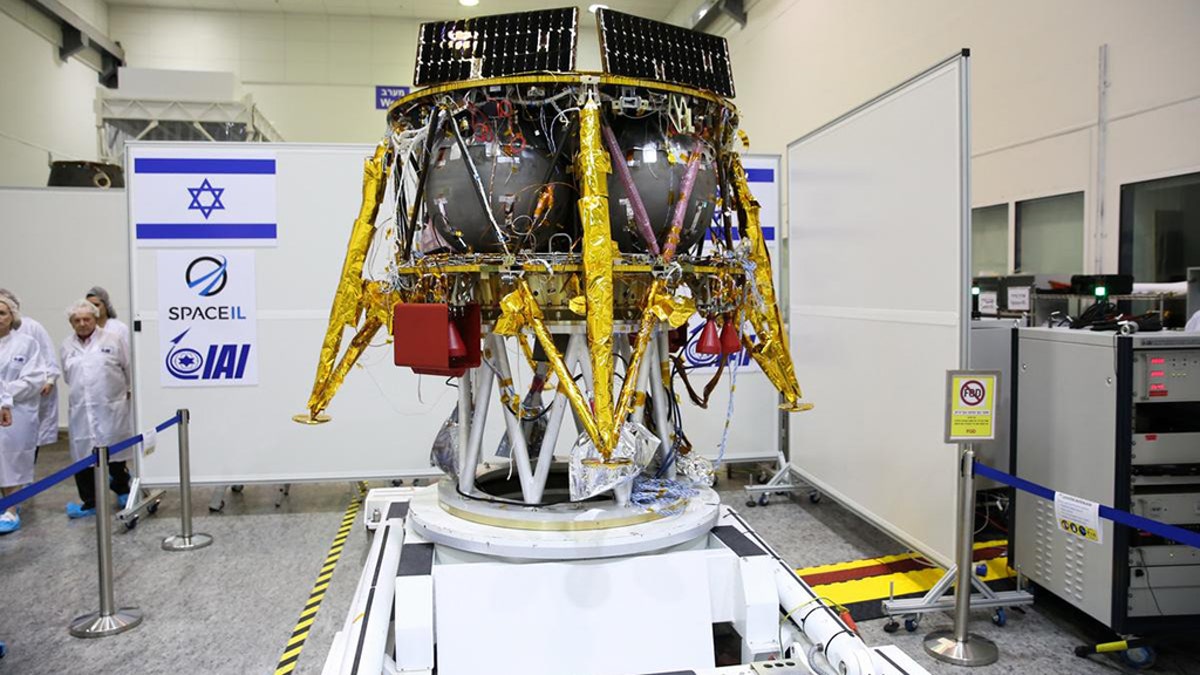
SpaceIL and the state-owned Israel Aerospace Industries plan to launch their unmanned craft in December hoping to become the first non-governmental entity to land a spacecraft on the moon. (Eliran Avital)
Israel announced Tuesday that it will launch its first lunar mission in December 2018, hoping to become the fourth country to land on the moon, following the U.S., Russia and China.
SpaceIL and the state-owned Israel Aerospace Industries presented the new spacecraft, which took eight years of collaborative efforts, and $95 million to build the smallest aircraft to date.
It is measured to be four-feet high, and 6 ½-feet in diameter, and it will be able to reach a maximum speed of 22,370 miles per hour.
South African-Israeli billionaire Morris Kahn, president of SpaceIL, who has donated $27 million to the enterprise, was extremely excited: “The launch of the first Israeli spacecraft will fill Israel, in its 70th year, with pride. It is a national accomplishment that will put us on the world’s space map.”
The project began when young engineers — Yariv Bash, Kfir Damari and Yonatan Winetraub — decided to build a spacecraft and take part in the Lunar Xprize competition sponsored by Google, which originally included a $20 million prize for the first group of contestants to land an unmanned spacecraft on the moon.
Its first task will be to plant an Israeli flag on the moon, organizers said.
Only then it will embark on its scientific mission, and will begin to take photos and videos of the landing site, and measure the moon’s magnetic field.
The research, conducted in cooperation with scientists from the Weizmann Institute of Science in Rehovot, will use a magnetometer on the spacecraft to attempt to understand how the rocks on the moon received their magnetism.
Josef Weiss, IAI CEO said, “As one who has personally brought the collaboration with SpaceIL to IAI, I regard the launch of the first Israeli spacecraft to the moon as an example of the amazing capabilities one can reach in civilian-space activity. The State of Israel, which is already firmly planted in the realm of space in its military activity, must harness resources for the benefit of civilian space, which is an engine of innovation, technology, education and groundbreaking around the world.”
It will be launched via a rocket from Elon Musk’s SpaceX firm this December, and it’s expected to land on the moon on February 13, 2019.
The Associated Press contributed to this report.
